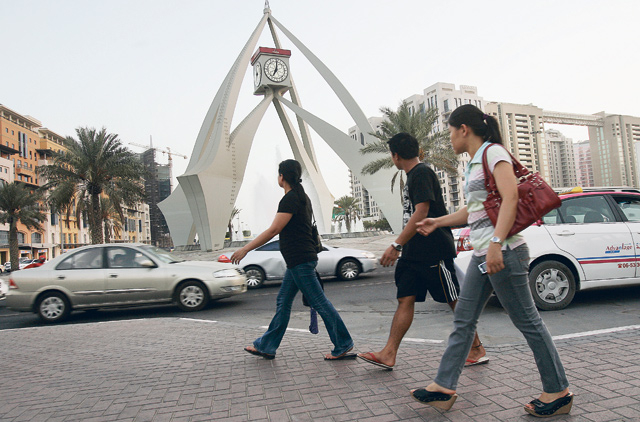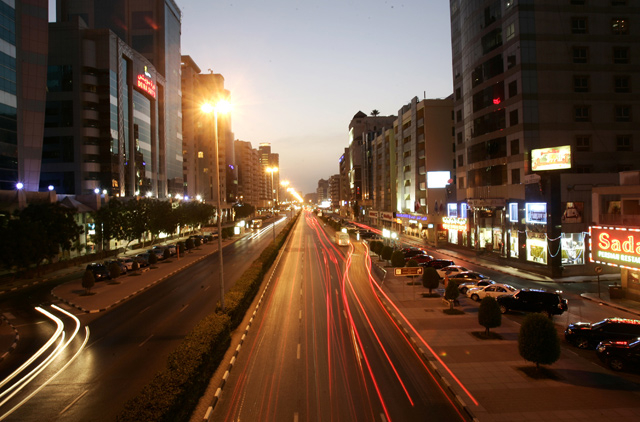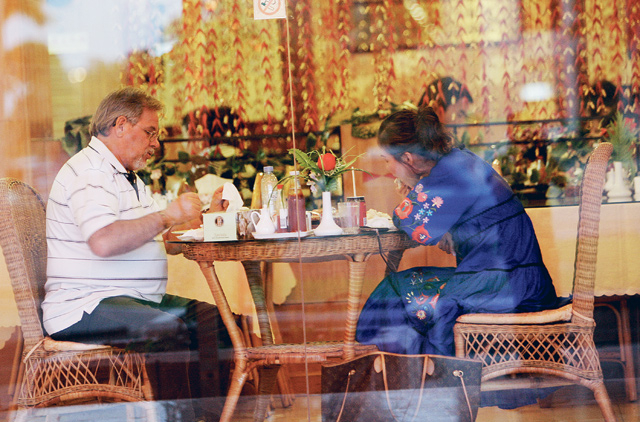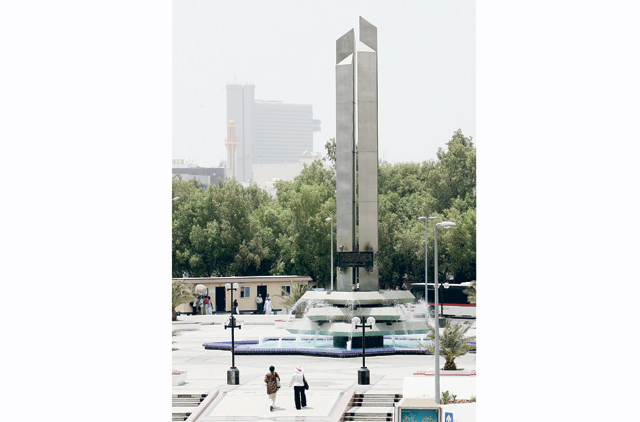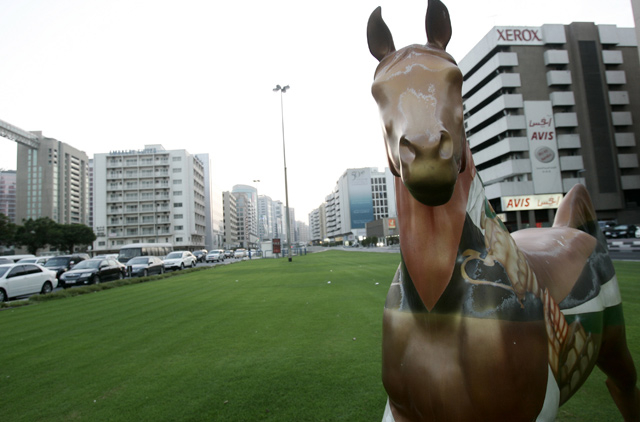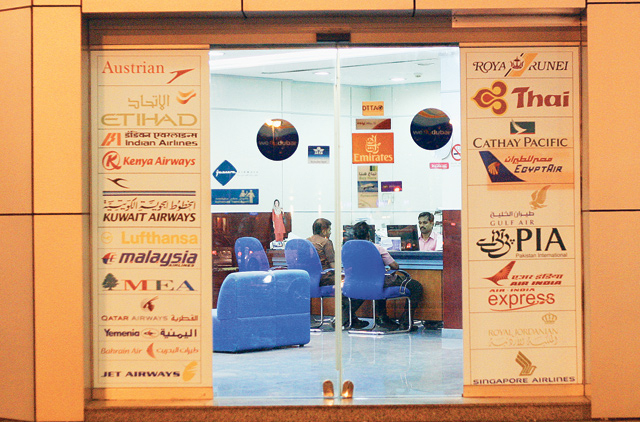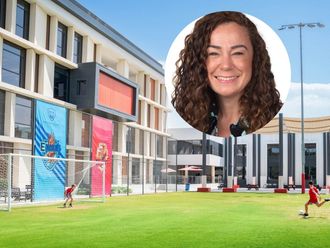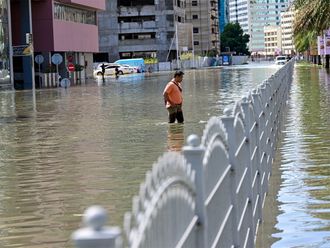
Before there was Shaikh Zayed Road, there was Al Maktoum Street. The first paved road in Deira, Al Maktoum Street has the iconic clock tower on one end and Bani Yas Square, the cross-roads of Deira's souqs, on the other.
Once home to many of the biggest businesses in the city, including Pepsi Cola Company and Shell Oil Company, Al Maktoum Street still houses some major Government buildings, such as Dubai Municipality and Etisalat Tower, a plethora of travel agents, numerous hotels and more than a few unique eateries.
As you head west on Al Maktoum Street the offices, hotels and travel agents begin to make way for general traders with blaring signs like Day 2 Day and Al Sayad Hunting Accessories, which has always been intriguing how such a store can operate in a country where hunting is illegal.
Further west and the souq begins to encroach as you reach the chaos that is Bani Yas Square. Currently under heavy construction one wrong turn can lead you into a maze of narrow one-way streets where stevedores, pulling hand carts overloaded with goods, make up much of the traffic. Getting out of there without a GPS may take all day.
Sandwiched between Rigga Street, and its busy night life and restaurants, and Al Khor Street with its five-star hotels over looking the creek, Al Maktoum St. gains much of the over flow of traffic from the two streets at night and gets quite busy.
Sadaf Persian Restaurant has witnessed the evolution of Al Maktoum Street — the 33-year-old Iranian grill is well-known among long-time residents of the city. It's freshly-baked Iranian bread and wide selection of grilled meats still attracts as many customers as it did back in the 1970.
"This is an excellent location, everyone in Dubai knows this branch of Sadaf," says Maurice Deeb, Manager of Sadaf.
"This used to be the most prominent road in the city, anyone who is anyone would have a shop on Al Maktoum Street. Today they've all moved to shopping centres, but we still have very nice hotels here and we still have our client base."
"We don't have a problem with parking anymore, we've learned from the hotels and now provide valet service for our customers," says Deeb.
Just on the corner of the Clock Tower Roundabout is China Sea Restaurant, one of the quirkiest eateries in the city. With a staff of Chinese chefs, servers and management, the aptly named restaurant serves some true seafood delicacies.
Jellyfish salad and Sea Cucumber top the list of strange edibles found in China Sea's novella of a menu.
The restaurant also proudly displays a wall of aquariums where it keeps live seafood — from lobster to mud crab — for customers to choose from.
One thing that truly sets this Chinese restaurant apart from the thousands dotted around Dubai is that they make their noodles by hand; right there on the spot in front of the customer, which is like a mini circus act display of skill and swinging gluten.
"Half our customers are Chinese, but we have a large mix of nationalities that like to dine here," says Ji Yan, Manager of China Sea. "We have been here for seven years now; it's a very nice location right next to the clock tower. The only problem we have is with parking, customer have too much trouble finding parking."
With a somewhat eccentric yet friendly staff, who can be excused their limited English, a meal at the China Sea is destined to be quite a different experience, if not an interesting anecdote.
History
"Al Maktoum Street was built around 1963 or '64, around the same time when Al Maktoum Bridge, the first bridge spanning the creek was built," says Eng Rashad Bukhash, Director of Architectural Heritage Department at Dubai Municipality.
"This was a connection mainly from Zabeel, where the palace is. The first road was Al Seef road which connected the Ruler's Court in Bur Dubai, and when they built the bridge, Al Maktoum Street was the passage that connected the palace to Deira."
"At that time, Al Maktoum Street was the most important road in Dubai, even though it was only one lane in each direction, but very important buildings were located on Al Maktoum Street at that time. The Clock Tower, which is till now one of the symbols of Dubai, Shell Oil Company had one of the first buildings in the area, due to the near by oil fields at that time. There were also the governmental departments like Dubai Municipality, Land Department, The Water and Electricity Company and the first boys' high school, Dubai Secondary School. So people would have to pass through these on their way to the market. The Pepsi Cola Company's first location was on this street as well."
Bukhash added that the area itself was considered the outskirts of Dubai because the central area was full of buildings and houses. "Usually the graveyard on both Bur Dubai and Deira marked the end of the city, Al Maktoum Street starts at the graveyard and continues out of the city, so it was a new street that started at the end of the old city and literally paved the way into the modern city. So it was like the Shaikh Zayed Road of its day up until the 1980s."
Jamal Abdul Nasser Square, which then came to be called Bani Yas Square reflecting the tribe the Al Maktoum and Al Nahyan families come from, was a very important area. "It was the first large public area in the city. The old cinema, Al Watan, was located there next to the graveyard, along with the few important buildings around the plaza, so it was a place for the gathering of the people, almost like the first public park before Safa Park and Mushrif Park, the square was where they would gather and spend their recreational time."
The graveyard is still there, as with all the other graveyards in Dubai, untouched. The high school is gone but there is a memorial arch where it once stood.
The first Municipality building is now its Human Resources building, it also served as the court for some time.
The old Land Department building is now a parking lot for the Municipality. The Electricity and Water company was where the Etisalat tower now stands.
"The Qatari Cultural Division is still there, as I believe is the old Shell building," says Bukhash.
Clock Tower
The 80-metre tall Clock Tower is Dubai's first architectural icon, and at the time of completion in December 1965, it was one of the tallest structures. "There was really nothing around here at the time besides the Gas building [currently Embassy Suites], Dubai was really very small," said Ziki Homsi, one of the architects who designed and built the Clock Tower in 1965.
"I remember thinking at the time when we were building these projects, why are we building this all the way out here in the middle of the desert? Why not build it closer to the community? I had no idea what Dubai was about to become; which is a testament to the vision of Shaikh Rashid."
The clock was a gift from Shaikh Ahmad Bin Ali Al Thani of Qatar to his father-in-law Shaikh Rashid Bin Saeed Al Maktoum. The Doha Clock Tower was constructed at around the same time.
1 Clock Tower: Completed in 1965, the Clock Tower is still one of the iconic symbols of Dubai. Originally set out be a replica of Big Ben, the clock was instead mounted on four arches which incorporate Islamic architectural features while at the same time displaying a modern design.
2 Bani Yas Square: If you've ever wanted to get lost in a Middle Eastern souq, or see how Dubai was 30 years ago, this is where to start. Bani Yas Square is where all of Deira's souqs intersect.
3 Restaurants: Many of the eateries on Al Maktoum Street have been there for many years and have gained a good reputation in the area, not the least of which is 33 year old Sadaf Persian Restaurant. Enjoy everything from Iranian sweets to Greek cuisine.
Do you live on Al Maktoum Street and have a story to tell us about the area? What is your opinion of the changes that have occurred? Do you live in another neighbourhood and would like to tell us about it?


